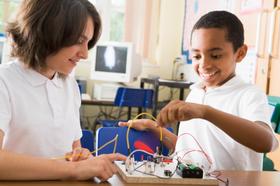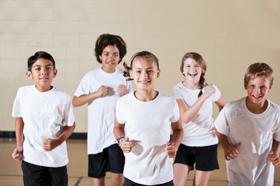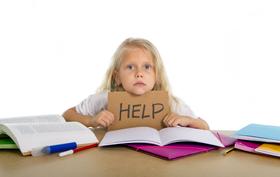Serving 246 students in grades 7-12, Burney Junior-senior High School ranks in the bottom 50% of all schools in California for overall test scores (math proficiency is top 50%, and reading proficiency is top 50%).
The percentage of students achieving proficiency in math is 25-29% (which is lower than the California state average of 33%). The percentage of students achieving proficiency in reading/language arts is 35-39% (which is lower than the California state average of 47%).
The student:teacher ratio of 15:1 is lower than the California state level of 21:1.
Minority enrollment is 45% of the student body (majority Hispanic), which is lower than the California state average of 80% (majority Hispanic).
Quick Stats (2025)
- Grades: 7-12
- Enrollment: 246 students
- Student:Teacher Ratio: 15:1
- Minority Enrollment: 45%
- Graduation Rate: ≥80% (Btm 50% in CA)
- Overall Testing Rank: Bottom 50%
- Math Proficiency: 25-29% (Top 50%)
- Reading Proficiency: 35-39% (Btm 50%)
- Science Proficiency: 20-24% (Btm 50%)
- Source: National Center for Education Statistics (NCES), CA Dept. of Education
Top Rankings
Burney Junior-senior High School ranks among the top 20% of public schools in California for:
Category
Attribute
Community Size
Student Attention
School Overview
Burney Junior-senior High School's student population of 246 students has grown by 7% over five school years.
The teacher population of 16 teachers has grown by 14% over five school years.
Grades Offered
Grades 7-12
Total Students
246 students

Gender %

Total Classroom Teachers
16 teachers

Students by Grade

School Calendar
School Rankings
Burney Junior-senior High School ranks within the bottom 50% of all 9,602 schools in California (based off of combined math and reading proficiency testing data).
The diversity score of Burney Junior-senior High School is 0.62, which is less than the diversity score at state average of 0.63. The school's diversity has stayed relatively flat over five school years.
Overall Testing Rank
#5091 out of 9602 schools
(Bottom 50%)
(Bottom 50%)

Math Test Scores (% Proficient)
25-29%
33%

Reading/Language Arts Test Scores (% Proficient)
35-39%
47%

Science Test Scores (% Proficient)
20-24%
29%

Student : Teacher Ratio
15:1
21:1

American Indian
14%
1%

Asian
n/a
12%

Hispanic
23%
56%

Black
n/a
5%

White
55%
20%

Hawaiian
n/a
n/a
Two or more races
8%
6%

All Ethnic Groups



Graduation Rate
≥80%
87%

Eligible for Free Lunch
59%
54%

Eligible for Reduced Lunch
7%
8%

School Statewide Testing
School District Name
Source: National Center for Education Statistics (NCES), CA Dept. of Education
Profile last updated: 02/09/2025
Frequently Asked Questions
What is Burney Junior-senior High School's ranking?
Burney Junior-senior High School is ranked #5091 out of 9,602 schools, which ranks it among the bottom 50% of public schools in California.
What percent of students have achieved state testing proficiency in math and reading?
25-29% of students have achieved math proficiency (compared to the 33% CA state average), while 35-39% of students have achieved reading proficiency (compared to the 47% CA state average).
What is the graduation rate of Burney Junior-senior High School?
The graduation rate of Burney Junior-senior High School is 80%, which is lower than the California state average of 87%.
How many students attend Burney Junior-senior High School?
246 students attend Burney Junior-senior High School.
What is the racial composition of the student body?
55% of Burney Junior-senior High School students are White, 23% of students are Hispanic, 14% of students are American Indian, and 8% of students are Two or more races.
What is the student:teacher ratio of Burney Junior-senior High School?
Burney Junior-senior High School has a student ration of 15:1, which is lower than the California state average of 21:1.
What grades does Burney Junior-senior High School offer ?
Burney Junior-senior High School offers enrollment in grades 7-12
What school district is Burney Junior-senior High School part of?
Burney Junior-senior High School is part of Fall River Joint Unified School District.
School Reviews
5 5/4/2024
Burney was great for me. As with any school in America, it truly is what you are able to make of it. The teachers were fantastic and helpful. I was able to participate in the sports I wanted to because it was small. Even though we were not always successful, the coaches always made the best of it and tried to teach us all about commitment and hard work.
4 11/1/2021
I am a previous teacher here. I believe the staff cares much and works hard for the students from the local community. I hope the shop teacher does well-preparing students for high-paying blue collar work, the facilities have potential if well-managed!
2 2/6/2011
I attended Burney high school for 2 yrs, and was extrememly angry with the treatment I received there. I was in the special ed program, where teachers gave me unfair punishment for bad grades, when there were other people with bad grades also. Non of them recived disiplinary action. The academic prgrams are okay as long as you're not in special ed. There was no parent involovment, since it's a small school there are advantages in sports, music, ext.
Review Burney Junior-senior High School. Reviews should be a few sentences in length. Please include any comments on:
- Quality of academic programs, teachers, and facilities
- Availability of music, art, sports and other extracurricular activities
Recent Articles

What Is A Charter School?
Explore the world of charter schools in this comprehensive guide. Learn about their history, how they operate, and the pros and cons of this educational innovation. Discover key facts about charter schools, including admission policies, demographics, and funding, as well as what to look for when considering a charter school for your child.

10 Reasons Why High School Sports Benefit Students
Discover the 10 compelling reasons why high school sports are beneficial for students. This comprehensive article explores how athletics enhance academic performance, foster personal growth, and develop crucial life skills. From improved fitness and time management to leadership development and community representation, learn why participating in high school sports can be a game-changer for students' overall success and well-being.

February 05, 2025
Understanding the U.S. Department of Education: Structure, Impact, and EvolutionWe explore how the Department of Education shapes American education, from its cabinet-level leadership to its impact on millions of students, written for general audiences seeking clarity on this vital institution.






